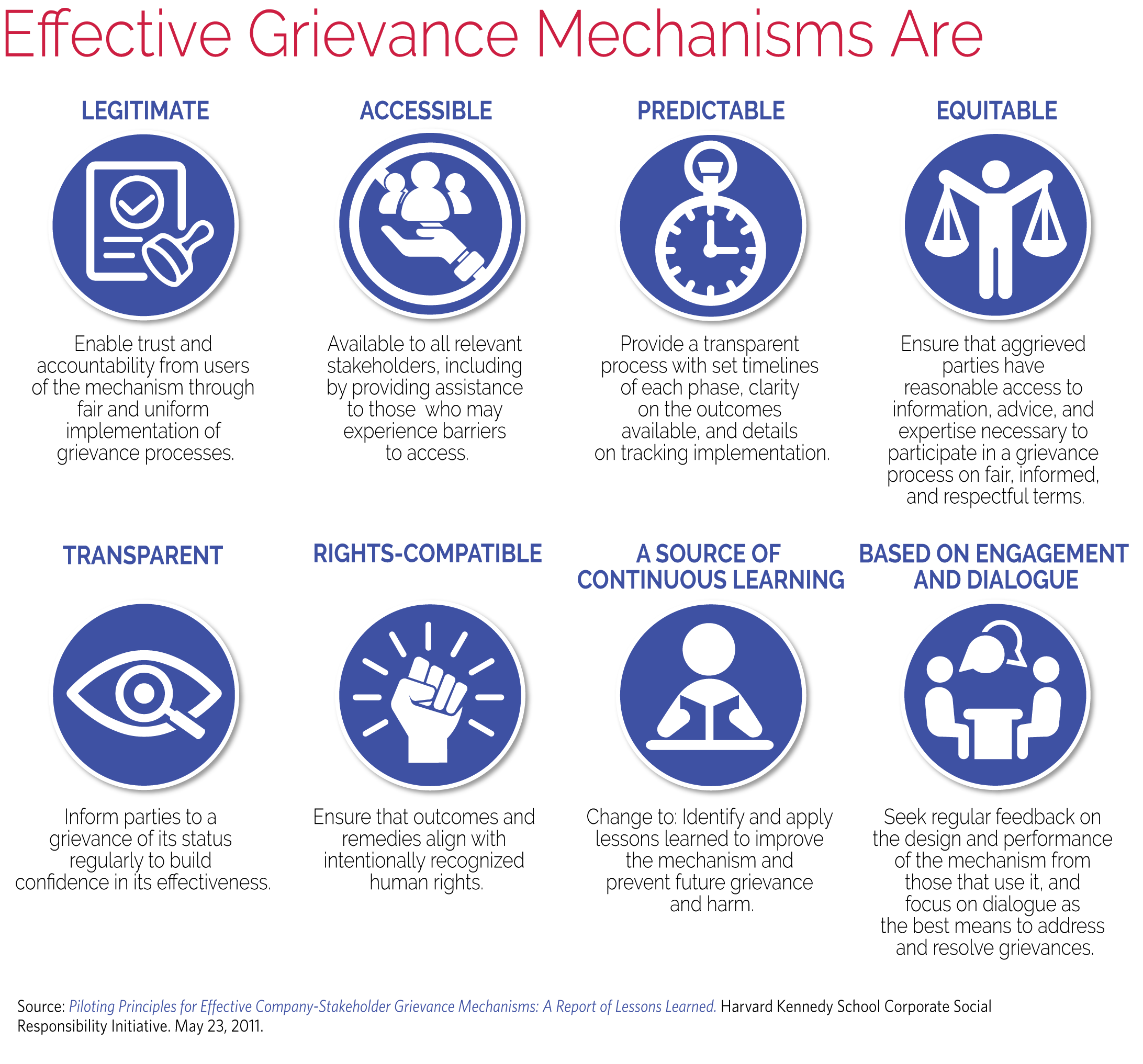Key Topic: What is a Grievance?

The ILO defines a grievance as the belief of one or more workers that their employer has not respected their rights and entitlements as established in provisions of an applicable collective agreement or individual contract of employment, works rules, laws, or the custom or practice of the workplace, industry, or occupation. Note that a grievance can be raised by a third party, including a community member, governmental organization, or NGO.
Grievances are addressed through grievance mechanisms, which outline the process for how a grievance is filed and handled and the responsibilities of each party throughout the process. Grievance mechanisms are often outlined in binding documents, such as collective bargaining agreements or other agreements between workers, employers, and buyer companies.
Grievance mechanisms enable workers and populations affected by a company’s activities to seek redress for violations of their rights. Effective grievance mechanisms are confidential and secure, allowing workers to file complaints without fearing reprisal; have a clearly outlined process for how complaints will be handled; include thorough investigations of complaints; and have procedures for securing remediation when grievances are found to have merit.

Effective Grievance Mechanisms are:
- Legitimate: Enabling trust from the stakeholder groups for whose use they are intended and being accountable for the fair conduct of grievance processes.
- Accessible: Being known to all stakeholder groups for whose use they are intended and providing adequate assistance for those who may face barriers to access.
- Predictable: Providing a clear and known procedure with an indicative time frame for each stage and clarity on the types of process and outcome available and the means of monitoring implementation.
- Equitable: Seeking to ensure that aggrieved parties have reasonable access to sources of information, advice, and expertise necessary to engage in a grievance process on fair, informed, and respectful terms.
- Transparent: Keeping parties to a grievance informed about its progress and providing sufficient information about the mechanism’s performance to build confidence in its effectiveness and meet any public interest at stake.
- Rights-Compatible: Ensuring that outcomes and remedies accord with internationally recognized human rights.
- A Source of Continuous Learning: Drawing on relevant measures to identify lessons for improving the mechanism and preventing future grievances and harms.
- Based on Engagement and Dialogue: Consulting the stakeholder groups for whose use they are intended on their design and performance and focusing on dialogue as the means to address and resolve grievances.
Source: UN Guiding Principles on Business and Human Rights
Evaluating Grievance Mechanisms
Over time, companies should evaluate the effectiveness of their grievance mechanisms. Some good practices for evaluation include:
- Uptake: Companies should track the number of grievances submitted over time, while noting that lower grievance rates may not reflect lower prevalence of social compliance gaps.
- Themes: Grievance data analysis pinpoints priority areas for intervention. The absence of certain types of grievances may also be a risk indicator.
- Accessibility: Companies should assess whether all workers have equal access and ability to submit grievances, or if certain workers face other obstacles to submitting grievances.
- Confidentiality: Companies should examine any standard operating procedures that relate to grievance confidentiality, whistleblower protections, and reprisals. Testing grievance mechanisms through third-party auditing is another good practice.
- Grievance resolution rate: Companies should measure the proportion of grievances that are satisfactorily remediated and how long they take to close (see Step 6: Remediate Violations for further information on remediation).

 Step 5: Monitor Compliance
Step 5: Monitor Compliance


